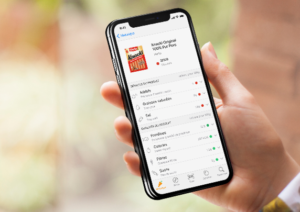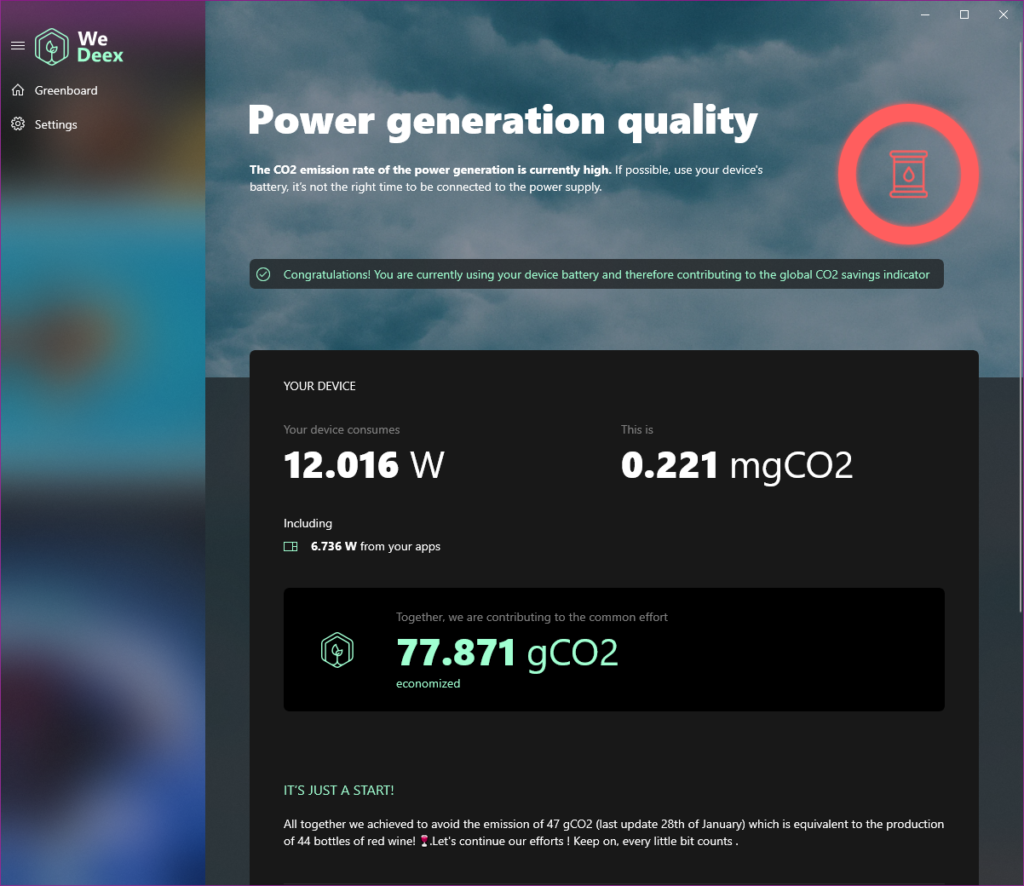At the end of 2020, in the midst of the COVID crisis, Emmanuel Macron, French President, called for a Yuka-like application to be made available to everyone to measure all product’s carbon footprint.
Un « score carbone » pour évaluer l’impact environnemental des produits ? J’y suis favorable. Nous pouvons créer ensemble le @YukaApp du carbone !
— Emmanuel Macron (@EmmanuelMacron) December 14, 2020
Every step counts in the energy transition. The parallel made by the French President with the Yuka application is not very surprising as this application has not only revolutionized food purchases but also forced food manufacturers to change the recipes of their products. Yuka is a mobile application for iOS and Android that scans the barcode of food and cosmetic products and gives detailed information on their composition. Each product gets a score out of 100, which makes it possible to identify products that are good for your health and those that are not. Yuka (application) — Wikipédia (wikipedia.org)

For certain product categories, such as PCs or software, for example, this “carbon score” will fluctuate according to their use. It is easy to understand that a user who uses a device’s processor all day long and a user who simply uses it for one hour a day will not have the same carbon impact.
Every step counts in the energy transition
The electricity used to power a digital device represents on average less than 20% of its carbon impact. The bulk of the carbon impact of a device is from its manufacture. In addition to the commitments that must be made by manufacturers on the remaining 80% (composition, manufacturing), optimizing this 20%, especially at a global scale, can contribute to a significant reduction in their carbon footprint. As I demonstrated with the VLC video player, working on usage times of 1 to 2 hours per week, we are achieving significant figures. VLC on Windows represents half a billion minutes of use per day worldwide. A 20% reduction in power consumption of its use represents a saving of 50 mtCO2e per day, the equivalent of driving a car 124,000 miles over a day.
As with food or beauty, the first step in accelerating the energy transition is to provide consumers with the same level of information as the producer, even before purchase.
To apply this to electricity today, energy grid operators, such as RTE in France, publish real-time information on the energy production mix: Eco2mix – Production d’électricité par filière en France | RTE (rte-france.com)
Tomorrow provides a consolidated view of all European countries with all exchanges made between countries electricityMap | Live CO₂ emissions of electricity consumption in real-time. In the U.S., WattTime provides this information by state: Watttime – The Power to Choose Clean Energy
First step: Provide consumers information before purchase
Based on these data, we worked with CSN Energy to develop an application for users to help them better manage their electricity consumption.
Better electricity consumption obviously means starting by consuming less electricity. But it also means being able to group or transfer electricity consumption at a time of day, week or month based on the energy mix, for instance when the amount of carbon emissions produced per kilowatt-hour is the lowest. This will depend on several criteria such as the country of production, the weather, the time of day, and the load of the network.
Of course, not all sources of electricity have the same carbon footprint. Some sources, such as wind, sun or water, are considered renewable sources that do not emit carbon. Other fossil fuel sources emit varying amounts of carbon to produce electricity. For example, gas-fired power plants emit less carbon than coal-fired plants (Learn more about Carbon Intensity – Carbon Intensity • Principles of Sustainable Software Engineering).
It is the proportion of renewable energy injected into the grid that reduces carbon emissions from 45% to 99%. On the other hand, marginal productions due to network saturation and over-consumption have a greater carbon impact as they come mainly from fossil fuel power plants.
Transfer your electricity consumption
Our current pandemic context has demonstrated that as the demand for electricity has decreased during lockdown, it has been possible to stop marginal, carbon-intensive production, as clearly explained by the New York case How coronavirus exposed the importance of marginal emissions – Watttime.
So if we can control the power consumption of devices according to the carbon intensity of the power grid during the day, we will be able to significantly reduce CO2 emissions.
From a purely theoretical point of view, over one year, this could represent a 10% reduction in the carbon footprint of a device.
The CSN Energy application informs Windows PC users in real-time about their power consumption and the quality of the energy mix. The application will therefore be able to recommend that users use their battery instead of plugging in their computer in order to defer their consumption to a less carbon-intensive period of the day, and thus calculate the amount of carbon saved.
WedeexApp is available on Github here
As part of their energy transition policies, several countries, including France, have published reports showing that this transition involves so-called “controllable” consumption.
The latest report of 1.27.2021 RTE (RTE and the IEA publish their study on the conditions of a power system with a high share of renewable energy in France by 2050 | RTE (rte-france.com)) estimates that in 2050 in France, between 40 and 60 gigawatts of controllable capacity will be needed to ensure an energy mix with a majority of renewable electricity production.
Being able to shift the power consumption of an electronic device or an application running in the cloud (for example by delaying automated AI training processes) will contribute to this controllable capacity and therefore help this transition.





This politically charged subject that motivates others through fear does not belong on a dev blog.